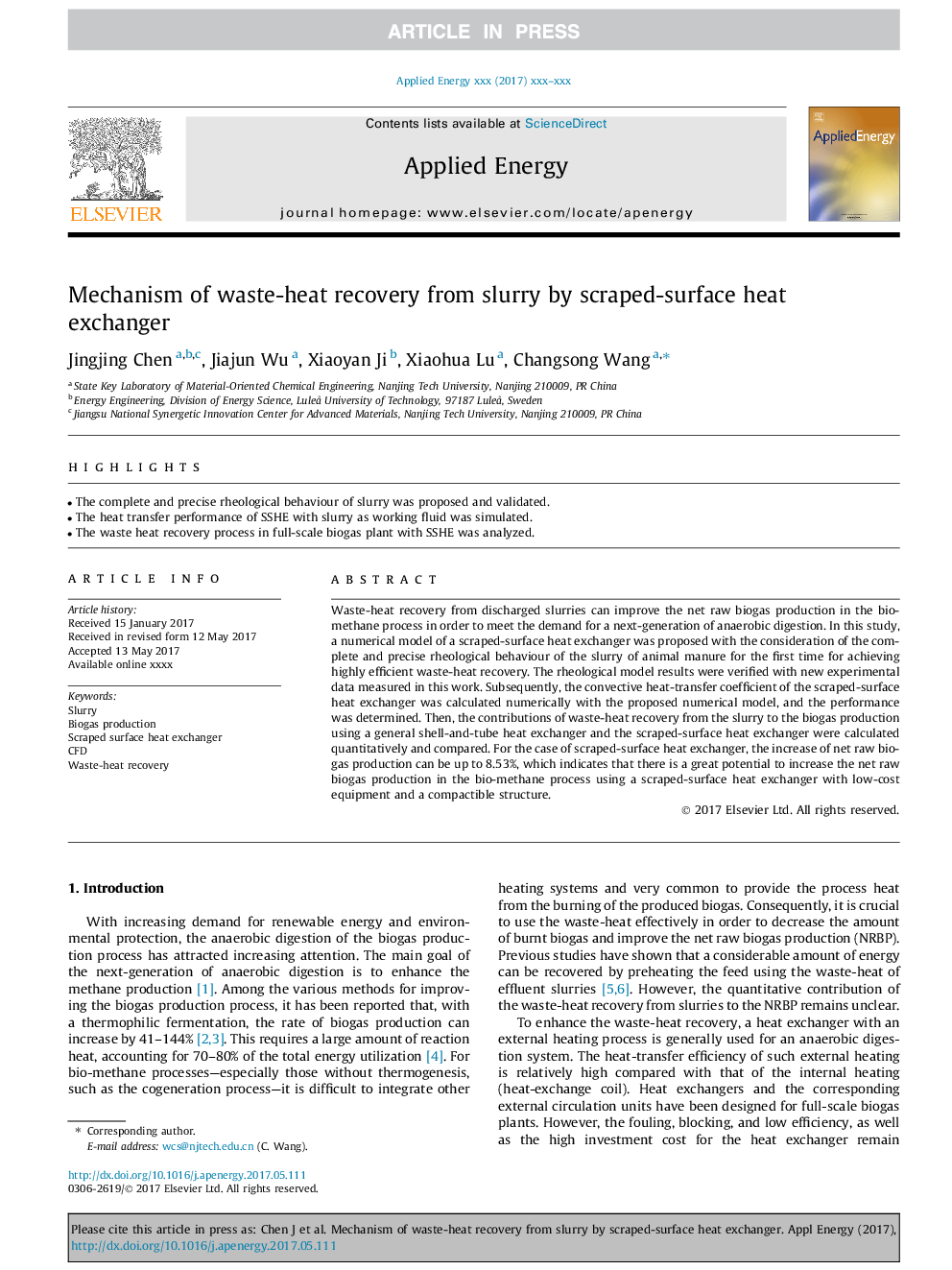| Article ID | Journal | Published Year | Pages | File Type |
|---|---|---|---|---|
| 6681869 | Applied Energy | 2017 | 10 Pages |
Abstract
Waste-heat recovery from discharged slurries can improve the net raw biogas production in the bio-methane process in order to meet the demand for a next-generation of anaerobic digestion. In this study, a numerical model of a scraped-surface heat exchanger was proposed with the consideration of the complete and precise rheological behaviour of the slurry of animal manure for the first time for achieving highly efficient waste-heat recovery. The rheological model results were verified with new experimental data measured in this work. Subsequently, the convective heat-transfer coefficient of the scraped-surface heat exchanger was calculated numerically with the proposed numerical model, and the performance was determined. Then, the contributions of waste-heat recovery from the slurry to the biogas production using a general shell-and-tube heat exchanger and the scraped-surface heat exchanger were calculated quantitatively and compared. For the case of scraped-surface heat exchanger, the increase of net raw biogas production can be up to 8.53%, which indicates that there is a great potential to increase the net raw biogas production in the bio-methane process using a scraped-surface heat exchanger with low-cost equipment and a compactible structure.
Related Topics
Physical Sciences and Engineering
Energy
Energy Engineering and Power Technology
Authors
Jingjing Chen, Jiajun Wu, Xiaoyan Ji, Xiaohua Lu, Changsong Wang,
